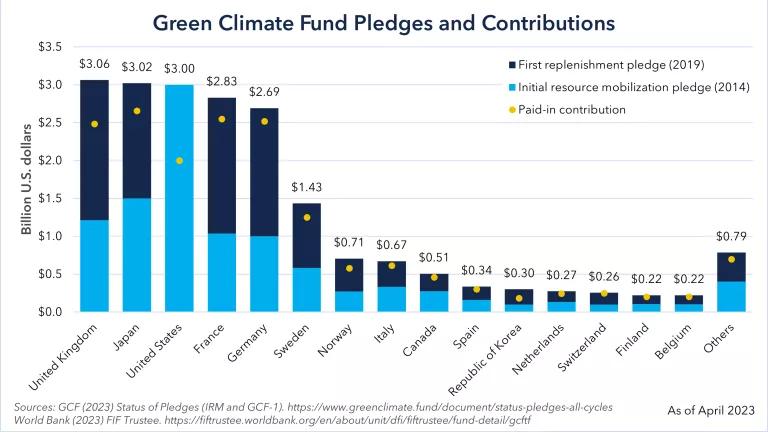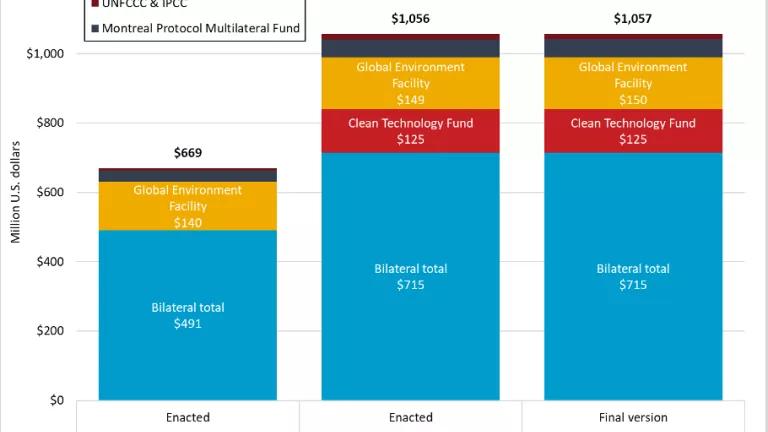Climate Change Disclosures: Is 2022 the Year?
The SEC says it is considering requiring climate change disclosures from companies. Here is what those disclosures might look like, and what we should expect them to accomplish.
Gary Gensler, the chair of the U.S. Securities Exchange Commission, said last year that a proposal requiring companies to make mandatory disclosures about climate change would be forthcoming. This could give investors information about a company’s contribution to climate change. The SEC has been signaling it was headed toward requiring such disclosures for a while. Last year then-acting Chair Allison Herren Lee invited public input on the outlines for climate disclosures, and Gensler was supportive of the idea in his confirmation hearings. A proposal is widely expected in the first quarter of this year. And while we wait, now is a good time to think about two questions. What should the SEC propose? And what should we expect the consequences of climate financial disclosures to be?
The first question has a somewhat paradoxical answer: The SEC should be ambitious but should avoid novelty. Let’s unpack that, taking the second part first. There are already multiple voluntary frameworks for corporate disclosures on climate change. They are known by an array of acronyms. There is the Taskforce on Climate-related Financial Disclosures (TCFD), the Carbon Disclosure Project (CDP), the Global Reporting Initiative (GRI), the Sustainability Accounting Standards Board (SASB), which recently merged with the International Integrated Reporting Council (IIRC). You get the drift. Out of this pack, the TCFD has emerged as a leader. If there is a consistent theme in the responses to the SEC’s request for information, it’s that the TCFD is a good starting point for disclosures because it’s already widely adopted, and investors find it useful. That’s not to say it is perfect—it has a narrower focus than some of the sustainability-based frameworks out there—but the point of a disclosure regulation is to give investors reliable information and so you can’t go too far wrong if you start with the disclosures that investors already use. Mandating these disclosures is itself a significant step forward because companies can no longer opt out of them or pick and choose what they want to reveal.
If the SEC doesn’t need to reinvent the form of disclosures, however, it should still require robust disclosures. One issue is having companies disclose so-called Scope 3 emissions of greenhouse gases. (A popular way to catalog greenhouse gas emissions is to divide them up into three categories, or “scopes.” Scope 1 emissions are direct greenhouse gas emissions from a company’s operations, such as pollution from a factory; Scope 2 emissions are greenhouse gas emissions from the power suppliers that a company uses; Scope 3 emissions are “everything else”—emissions from suppliers, contractors, product use, employee business travel, etc.) Scope 3 emissions are important because a company can shrink its overall greenhouse gas footprint by leaving them out, even if those are most of their emissions. Imagine if an automaker left out the emissions from the cars they make, or if a bank that lends billions for oil and gas exploration left out the emissions from the oil and gas its customers extract. Companies have resisted Scope 3 disclosures because of the difficulty of accounting for them. That should not dissuade the SEC. There are voluntary frameworks now that include comprehensive guidance for disclosing Scope 3 emissions. The Partnership for Carbon Accounting Financials (PCAF, if you want yet another acronym) is a great example. PCAF covers so-called “financed emissions” from banks, asset managers, and other financial institutions. And because Scope 3 emissions represent the sum of other companies’ Scope 1 and Scope 2 emissions, mandatory disclosures should ease some of the difficulties in estimating them. The SEC’s proposed climate disclosures should at the least include a path for robust Scope 3 emissions disclosures, perhaps phasing in quickly as companies provide Scope 1 and Scope 2 disclosures.
And what would result from mandatory climate change disclosures? Here it is important to temper some expectations. The purpose of a disclosure rule is to give relevant information to investors. That’s it. It is up to investors how that information influences their decisions. We know that many investors want climate disclosures and use them when making investment decisions. The SEC once dismissed ESG investing as a niche market, but sustainability investing is now mainstream. Over three quarters of asset owners say that they at least consider ESG information when looking for asset managers. JP Morgan estimated that assets in ESG funds doubled in 2020, to over $7.2 trillion.
Mandatory disclosures are not going to magically usher in a transition from dirty investments to green investments, however, and that is not their purpose. A recent study published in Nature Climate Change made the point that informing investors about climate risk has not ineluctably led them to redirect their investments to green industries. As the authors of that study note, green investments are often in new and unfamiliar industries. Deciding to move investments away from high-emissions industries (or to move some investments away from high-emission industries) to manage financial risk does not automatically mean more capital for green industries. An investor familiar with the transportation sector, for example, may not know enough about a new technology like carbon capture to be comfortable investing in it. The point is that we know investors want the information, but what they do with it is up to them.
Mandatory climate disclosures, on their own, will probably not be a bank shot climate mitigation measure that causes investors to pour money into green stocks and lead to rapid decarbonization. But if mandatory disclosures lead to better informed investors, that is more than enough. As the Financial Stability Oversight Council confirmed in a recent report, climate change poses profound risks to the financial system, including risks to people and physical assets from heat, storms, wildfires, or floods, and transition risks through the move to a net-zero emissions economy, which will leave behind companies that cannot or will not adjust how they do business. Mandatory disclosures give investors the information they need to manage that risk.
Mandatory climate disclosures are a small step when compared to the scale of climate change. Information matters, however. And an example from environmental law, although different in many respects from federal securities law, demonstrates the benefits of better-informed decisions. The National Environmental Policy Act requires federal projects to study their effects on the environment – without requiring them to adopt an environmentally-friendly plan based on that study. Nevertheless, this law has improved environmental decision-making by any measure. Information is not the last step to solving a problem, but it is usually the first step. Let’s hope that 2022 sees a first step from the SEC.




